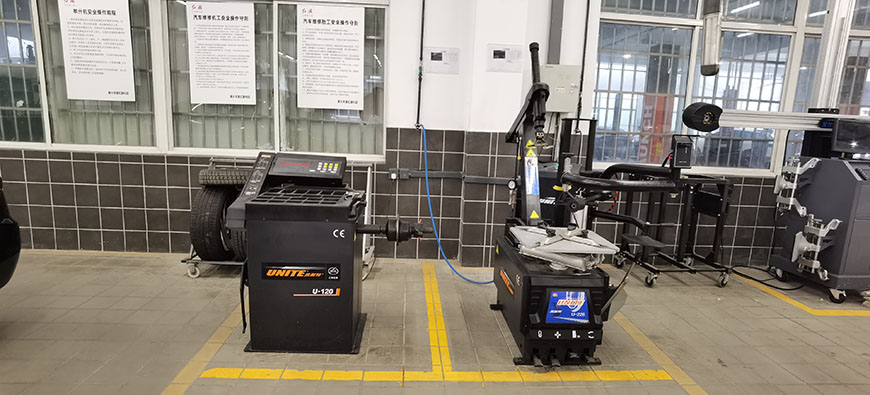A wheel balancer is a machine used to balance the wheels of vehicles, such as cars, trucks, and motorcycles. It is an essential tool in automotive service centers and tire shops to ensure smooth and vibration-free operation of the vehicle.
The purpose of wheel balancing is to distribute the weight of the wheel and tire assembly evenly. Imbalances can occur due to variations in weight distribution, uneven tire wear, or the presence of imperfections in the wheel or tire. These imbalances can lead to vibrations, uneven tire wear, and decreased vehicle performance.
A wheel balancer consists of the following main components and functions:
Wheel Mounting: The wheel is securely mounted onto the balancer using a wheel adapter or shaft. The wheel is typically centered and clamped onto the machine to ensure stability during the balancing process.
Spin Cycle: The wheel balancer spins the wheel rapidly to simulate its rotation on a vehicle. This spinning motion allows the balancer to measure any imbalances in the wheel.
Sensing System: The wheel balancer is equipped with sensors that detect any imbalances as the wheel spins. These sensors provide data to the machine, allowing it to determine the amount and location of the imbalance.
Weight Placement: Based on the information received from the sensing system, the wheel balancer indicates the precise location where additional weight needs to be added to counterbalance the imbalance. The weight is typically attached to the wheel using adhesive weights that stick to the inner or outer surface of the wheel.
Calibration: Wheel balancers need to be calibrated periodically to ensure accurate balancing results. Calibration involves verifying and adjusting the accuracy of the balancer’s sensors and measurements.
By balancing the wheels, the wheel balancer helps eliminate or minimize vibrations, enhance tire longevity, improve fuel efficiency, and provide a smoother ride for the vehicle.
It’s worth noting that there are different types of wheel balancers available, including manual balancers that rely on visual judgment, as well as computerized or electronic balancers that provide precise measurements and calculations. The specific features and capabilities of a wheel balancer may vary depending on the model and manufacturer.
UNITE U-688 LCD display wheel balancer with opt function & split and hidden weight solution, this machine features an electromagnetic brake, laser pointer, automatic measurement, 3D animation interface, and multi-language support, making it easy to use and accurate in balancing wheels.

Wheel Clamping System: The wheel balancer typically includes a secure and adjustable wheel clamping system that holds the wheel firmly in place during the balancing process. This ensures stability and accuracy.
Balancing Modes: The U-688 balancer likely offers various balancing modes, such as static balancing, dynamic balancing, and alloy rim balancing. These modes cater to different types of wheels and provide precise balancing results based on the specific requirements.
User-Friendly Interface: The wheel balancer is designed with a user-friendly interface, which includes intuitive controls and menu options. This makes it easier for technicians to operate the machine and access its features.
Split and Hidden Weight Solution: This feature refers to the ability of the wheel balancer to accommodate split or hidden weights. Some wheels require weights to be placed in hidden or discreet locations to maintain the wheel’s aesthetic appearance. The U-688 balancer likely provides a solution for these scenarios, allowing technicians to accurately balance the wheel while hiding the weights from view.
UNITE G-55 Wheel Balancer is a specific model of wheel balancer used in automotive service centers and tire shops.

G-55 Wheel Balancer, With automatic distance, diameter, and width measure scale, it can input data for the rim automatically.17″ LED segment display and visualize the operation interface for choosing balancing modes; with tool handle, lifting the machine as handlers; and with toolbox can place tools when operating the machine, and automatic width measuring scale.
Wheel balancing is a crucial aspect of vehicle maintenance that should not be overlooked. By using a wheel balancer, you can achieve optimal weight distribution, resulting in a smooth ride, improved tire longevity, and enhanced vehicle performance. Investing in regular wheel balancing not only enhances your driving experience but also contributes to your safety on the road. So, make wheel balancing an integral part of your automotive maintenance routine and enjoy the benefits of a well-balanced ride.

